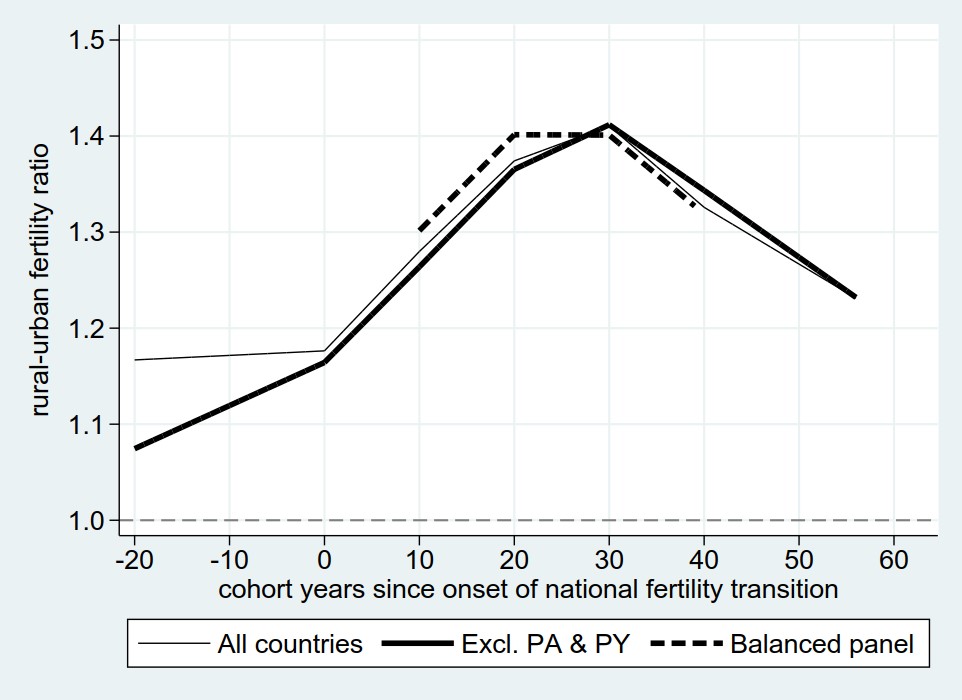We analyze trends in urban fertility and evaluate whether there is an inverted U-shaped evolution in rural excess fertility (relative to the urban level) over time – as implied by theories of the spatial diffusion of birth limiting behaviors from cities to the countryside. Results reveal impressive similarities in the trajectories of urban fertility decline across the developing regions of the world. This implies that we can confidently predict long-term fertility trends in urban areas and that more disaggregated methodologies of urban population projections should be developed. Another key conclusion is that the inverted U-shaped evolution in the rural-urban fertility differential over time was confirmed only in Latin America, Northern Africa and the Middle East. In Asia, the level of rural excess fertility was less pronounced, while in Africa it increased monotonically to the highest levels observed. The cross-country diversity in the national trajectories of fertility decline is therefore driven by the differences in the pace of the urban-to-rural diffusion of birth limiting behaviors. When compared to past trends in other developing regions, fertility decline in rural areas is much slower in sub-Saharan Africa, implying a strong pressure for rural-to-urban migration in the future. The next step in this project constitutes an analysis of how the inflow of rural-to-urban migrants affects trends in urban fertility.
Evolution of rural excess fertility (relative to the urban level) over the course of the national fertility transitions (60 low- and middle-income countries):

Source: Lerch, M. (2019): Fertility decline in urban and rural areas of the developing world, in Population and Development Review, 45(2), 301-320.